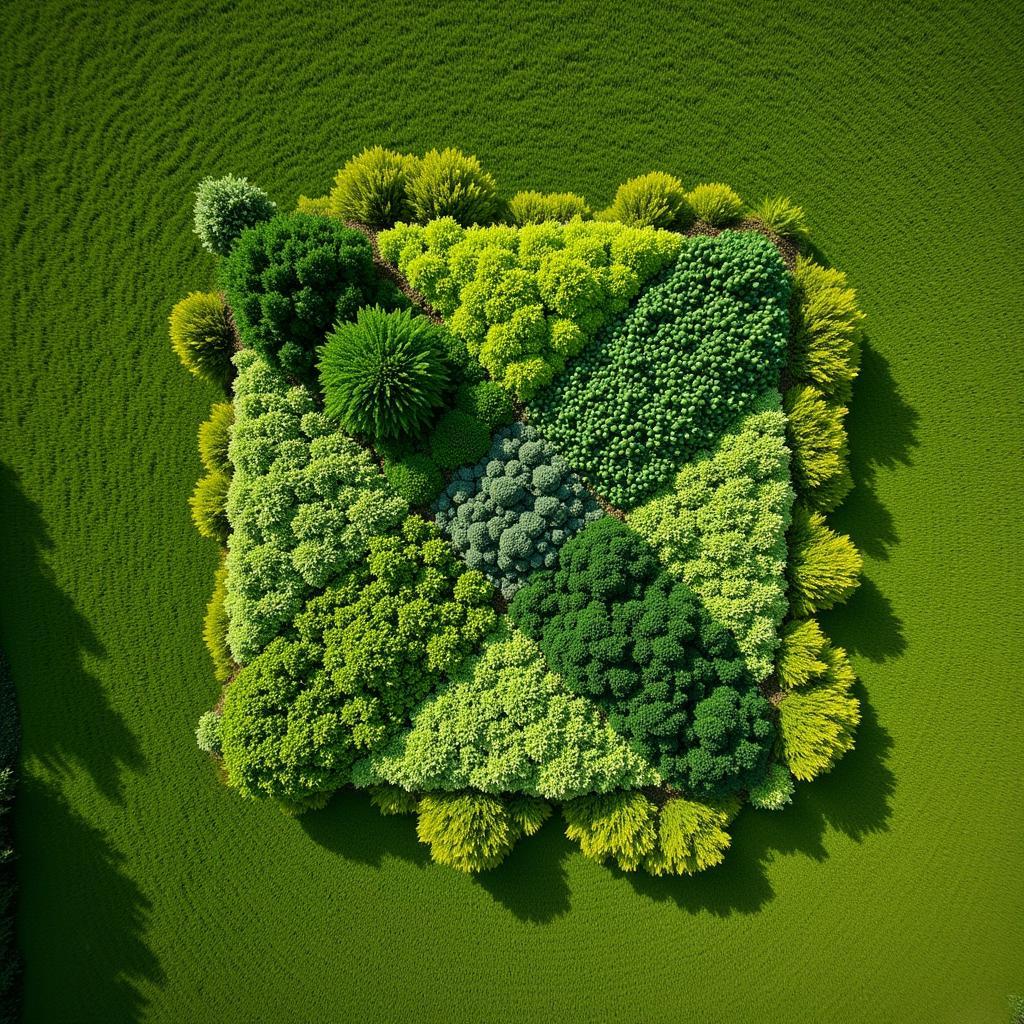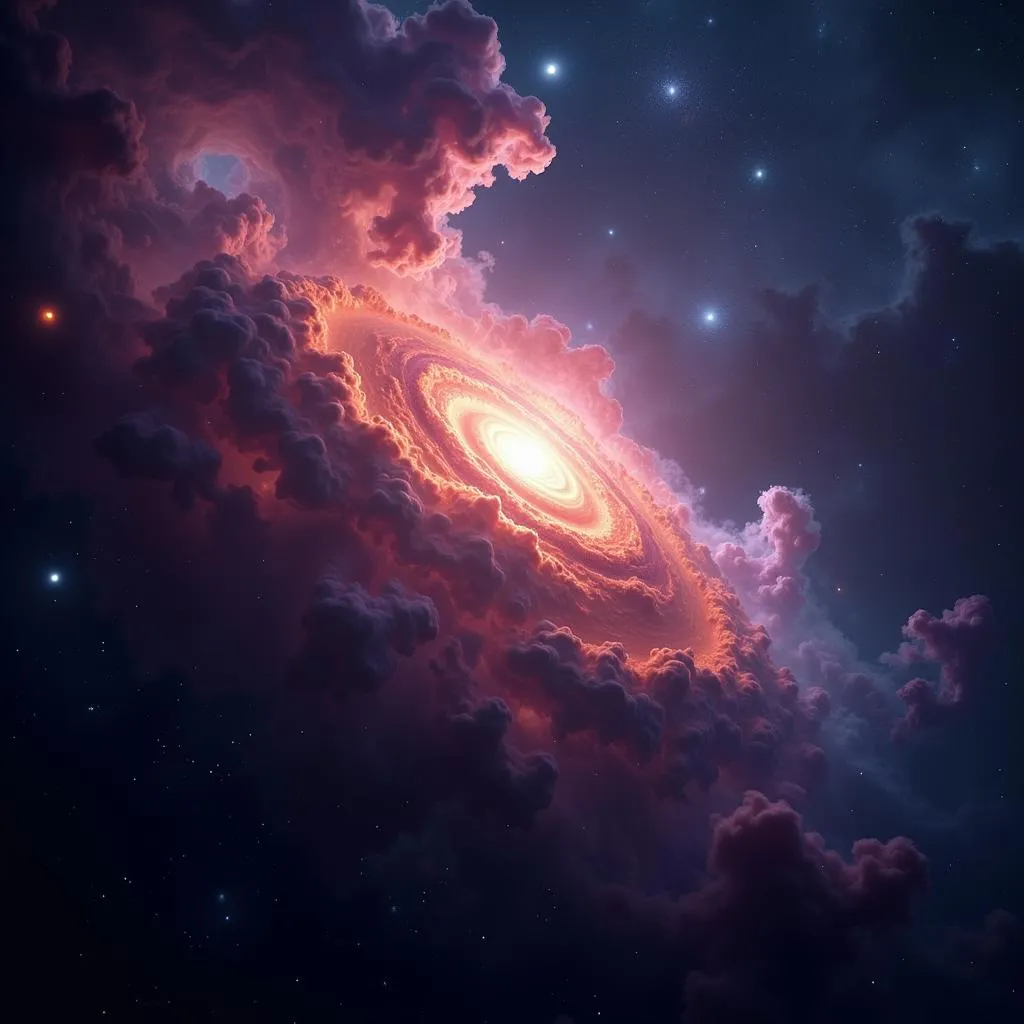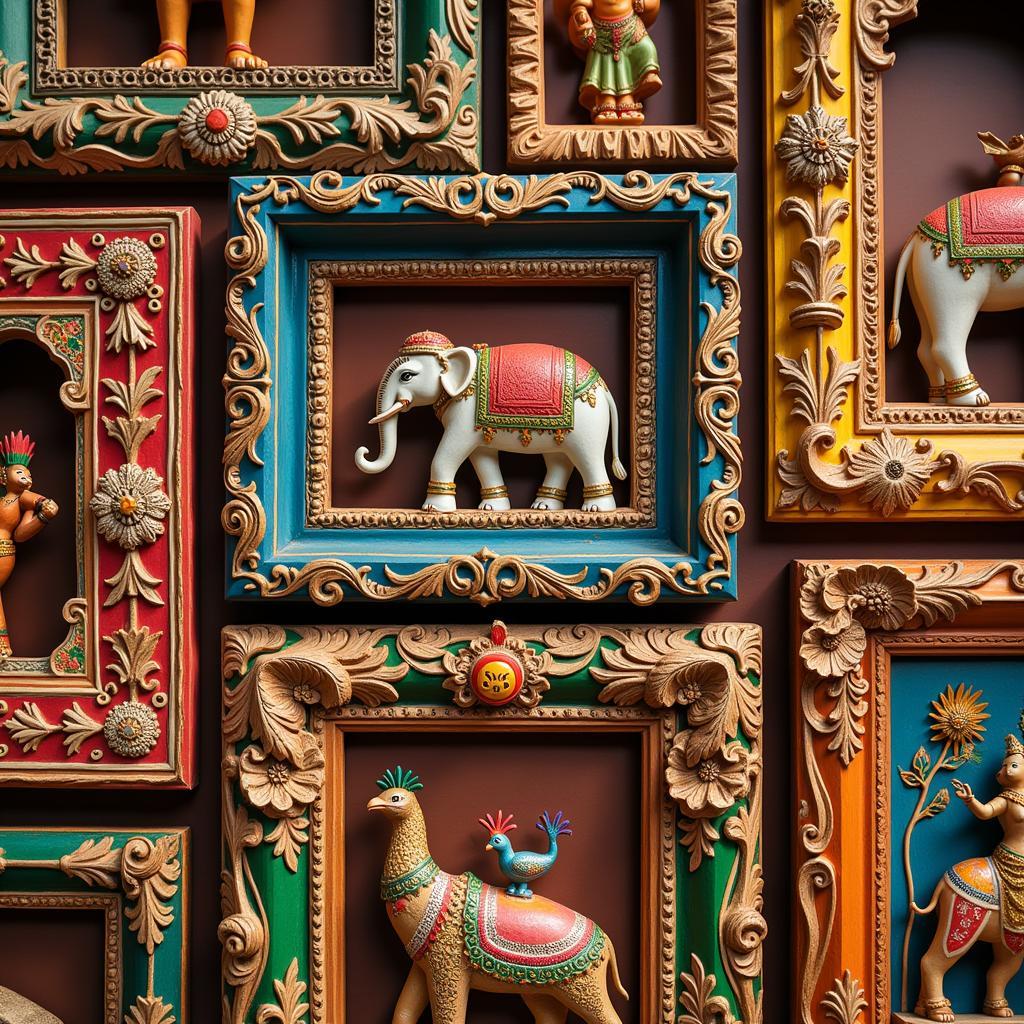Last of the Mohicans Art: Exploring Visual Representations
The enduring legacy of James Fenimore Cooper’s classic novel, “The Last of the Mohicans,” extends far beyond the printed page. Artists throughout history have been captivated by the novel’s themes of frontier life, cultural clashes, and the tragic fate of the Mohican people. This exploration delves into the diverse world of “Last of the Mohicans” art, examining its evolution, significant interpretations, and the profound impact it has had on shaping our understanding of this iconic story.
 19th Century Oil Painting Depicting a Scene from The Last of the Mohicans
19th Century Oil Painting Depicting a Scene from The Last of the Mohicans
Early Illustrations: Defining the Visual Narrative
From the novel’s initial publication in 1826, illustrations played a crucial role in bringing the story to life for readers. Early engravings, often appearing alongside serialized installments of the novel, focused on dramatic action sequences and romanticized depictions of Native American characters. These early visual interpretations, while often reflecting the prejudices and stereotypes of the time, were instrumental in establishing the visual vocabulary associated with “The Last of the Mohicans.”
One prominent illustrator of the early period was Felix O. C. Darley, whose engravings for an 1848 edition of the novel helped solidify certain visual tropes. Darley’s portrayal of characters like Uncas and Chingachgook, while idealized, emphasized their nobility and physical prowess, contributing to the enduring image of the “noble savage” archetype.
The Influence of Romanticism: Landscape as Character
As the Romantic movement swept through 19th-century art, its influence on “Last of the Mohicans” imagery became increasingly evident. Artists like Thomas Cole and Frederic Church, part of the Hudson River School, found inspiration in the novel’s evocative descriptions of the American wilderness. Their grand landscapes, often featuring towering trees, cascading waterfalls, and dramatic skies, captured the sublime beauty and untamed spirit of the frontier.
These paintings, while not always directly depicting scenes from the novel, echoed its themes of man’s relationship with nature, the encroachment of civilization, and the passing of an era. The awe-inspiring landscapes served as a poignant reminder of the vanishing world inhabited by the Mohicans, adding layers of depth and symbolism to the visual narrative.
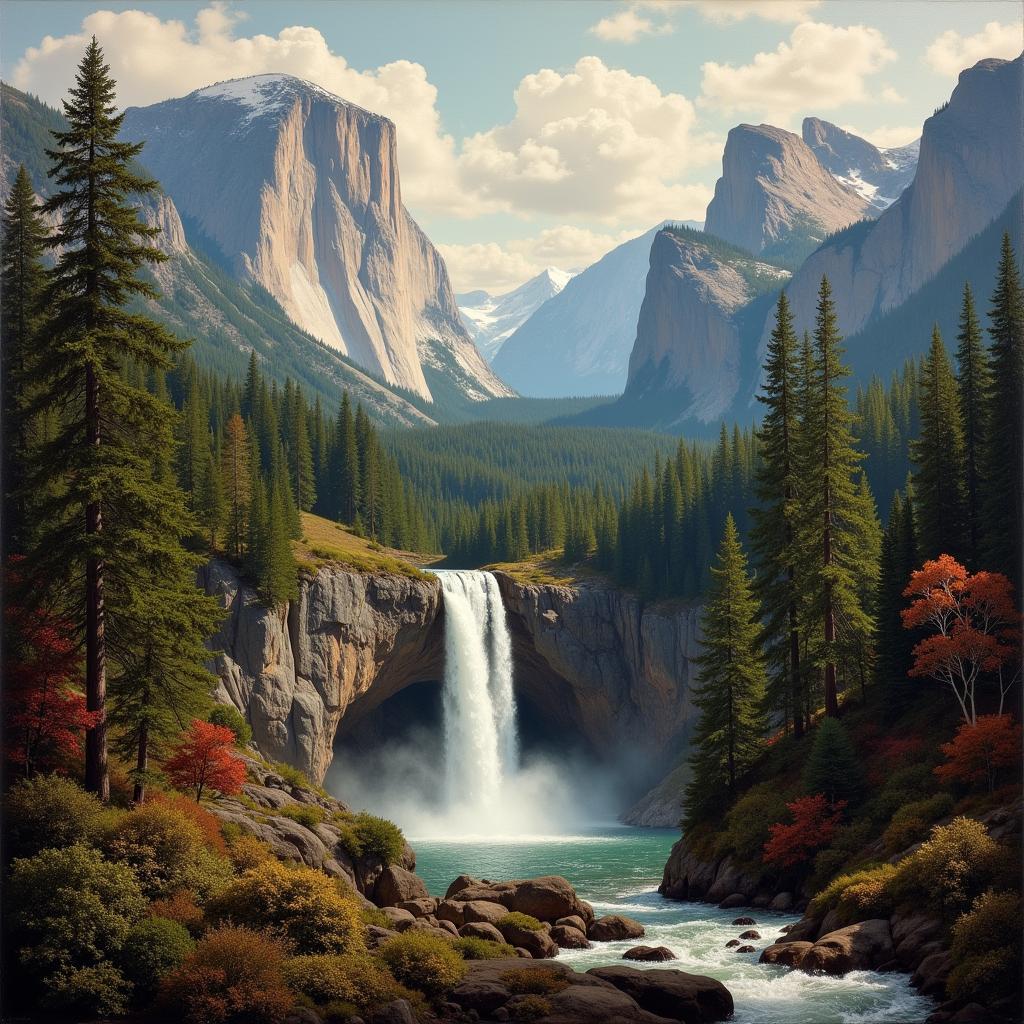 Romantic Landscape Painting Inspired by The Last of the Mohicans
Romantic Landscape Painting Inspired by The Last of the Mohicans
20th Century and Beyond: Reinterpretations and New Perspectives
The 20th century witnessed a shift in “Last of the Mohicans” art, with artists moving beyond literal interpretations to explore broader themes of cultural identity, colonialism, and the complexities of historical representation. Modern and contemporary artists have engaged with the novel through diverse mediums, from painting and sculpture to photography, film, and digital art.
One notable example is the work of N.C. Wyeth, whose illustrations for a 1919 edition of the novel brought a new level of dynamism and psychological depth to the characters. Wyeth’s paintings captured the emotional intensity of the story, emphasizing the human cost of conflict and the tragedy of cultural misunderstanding.
More recently, artists have used “Last of the Mohicans” as a lens to examine issues of historical accuracy, cultural appropriation, and the representation of Native American experiences. These works challenge viewers to confront romanticized notions of the past and to consider the lasting impact of colonialism on indigenous communities.
The Enduring Appeal of “Last of the Mohicans” Art
The enduring appeal of “Last of the Mohicans” art lies in its ability to transport us to a different time and place, immersing us in the dramatic landscape and compelling characters of Cooper’s novel. Whether through the detailed engravings of the 19th century or the thought-provoking interpretations of contemporary artists, visual representations of “The Last of the Mohicans” continue to captivate and inspire.
By exploring these diverse artistic expressions, we gain a deeper understanding of the novel’s enduring legacy and its impact on our collective imagination. “Last of the Mohicans” art serves as a reminder of the power of storytelling, the importance of cultural sensitivity, and the enduring resonance of stories that explore the complexities of the human experience.
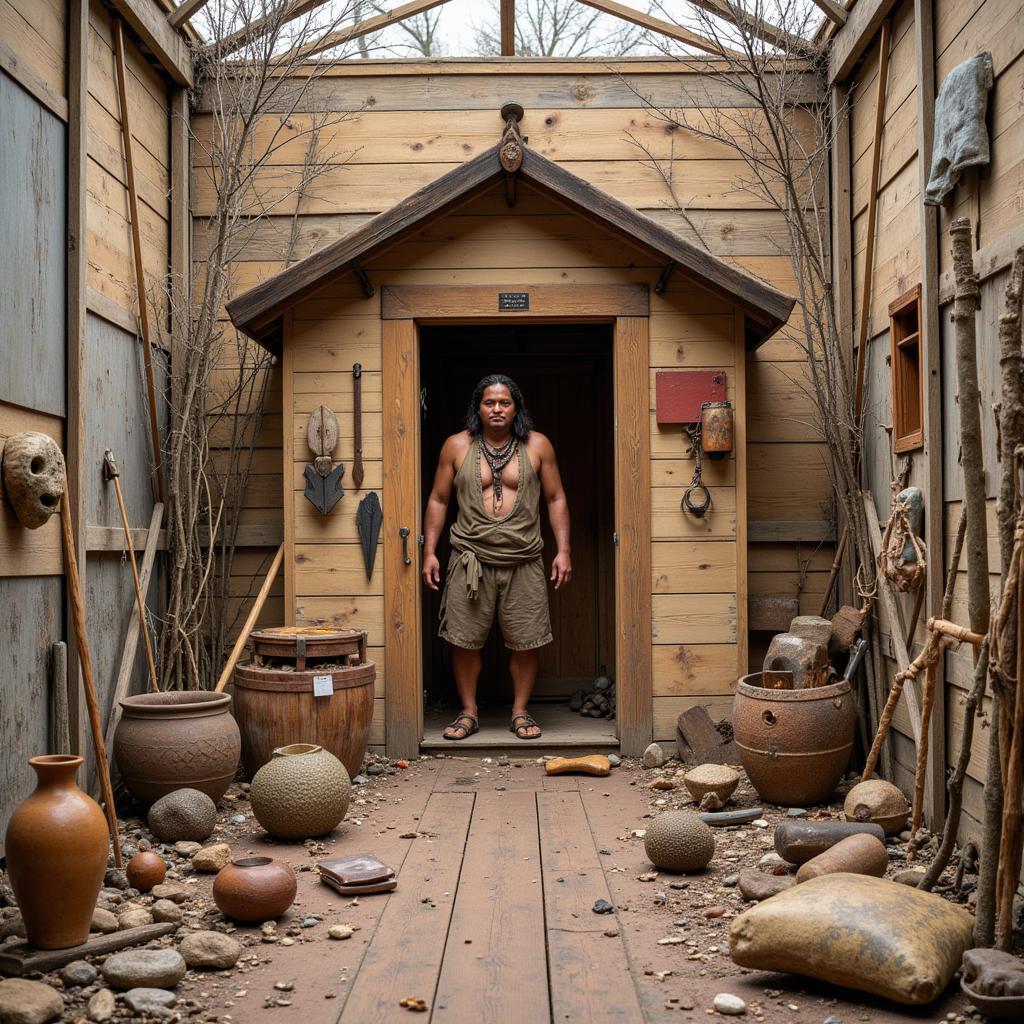 Modern Art Installation Exploring Themes from The Last of the Mohicans
Modern Art Installation Exploring Themes from The Last of the Mohicans
Last of the Mohicans Art: FAQs
1. What are some of the most famous paintings inspired by “The Last of the Mohicans”?
While not many paintings directly depict scenes from the novel, many artists drew inspiration from its landscapes and themes. Look for works by Hudson River School painters like Thomas Cole and Frederic Church, known for their romantic depictions of the American wilderness.
2. How has the portrayal of Native Americans in “Last of the Mohicans” art evolved over time?
Early illustrations often relied on stereotypes and romanticized depictions. However, contemporary artists have challenged these representations, striving for greater authenticity and exploring the complexities of Native American identities.
3. Where can I find collections of “Last of the Mohicans” art?
Many museums with American art collections may have pieces inspired by the novel. Additionally, online art databases and digital archives offer a wealth of resources for exploring visual interpretations of “The Last of the Mohicans.”
4. Are there any contemporary artists still creating work based on “The Last of the Mohicans”?
Yes, the novel continues to inspire contemporary artists working in various mediums, including painting, sculpture, photography, and mixed media.
5. What makes “Last of the Mohicans” art so enduringly popular?
The novel’s timeless themes of adventure, romance, cultural conflict, and the beauty of the natural world continue to resonate with audiences. Art inspired by the novel allows viewers to visually engage with these themes, transporting them to another time and place.
Need Help Exploring the World of Art?
Contact us for personalized assistance in navigating the captivating realm of art. Reach out to our team of art enthusiasts at:
Phone: +84 2462573573
Email: danteum@gmail.com
Address: Savico Megamall, 7-9 Đ. Nguyễn Văn Linh, Gia Thụy, Long Biên, Hà Nội 10000, Việt Nam.
Our dedicated customer support team is available 24/7 to answer your questions and provide guidance. Explore our website for more insightful articles on various art forms, techniques, and historical movements.
